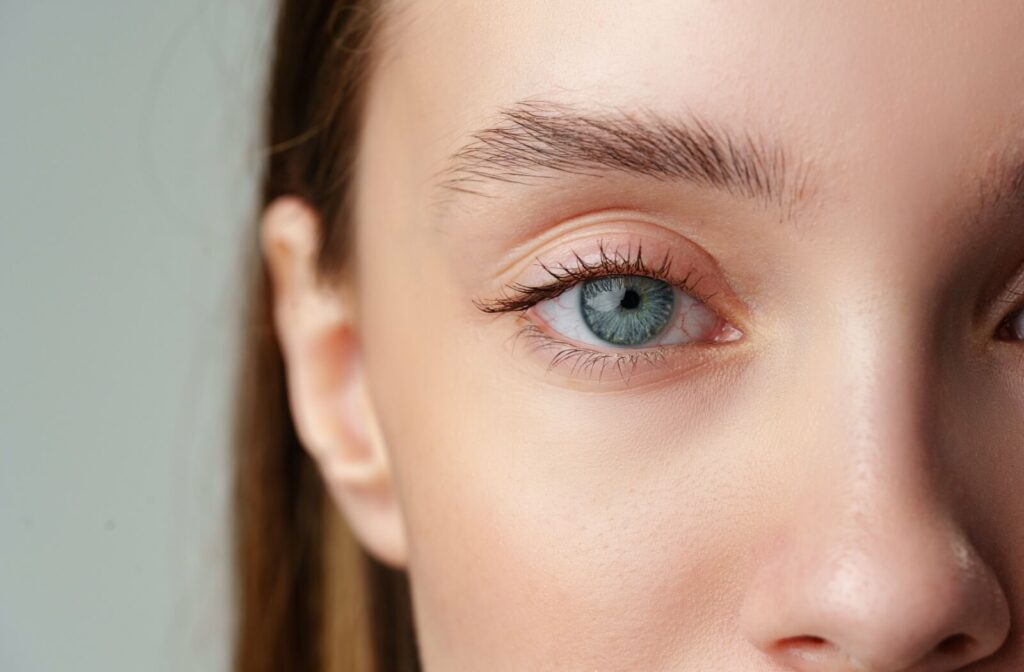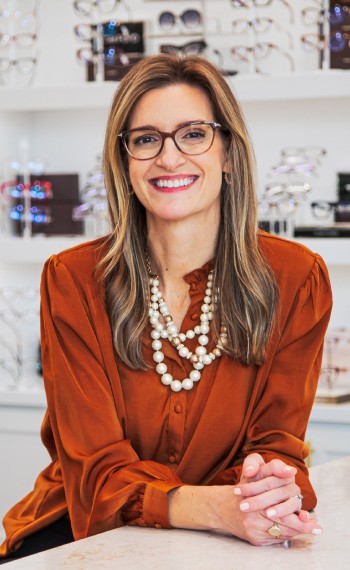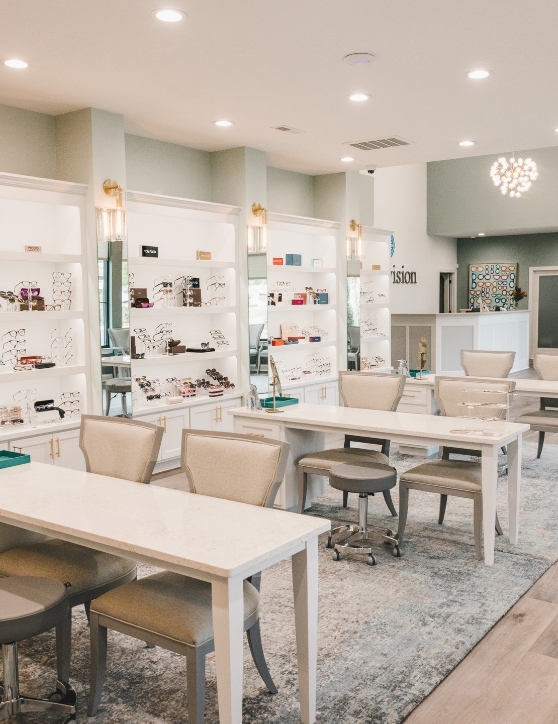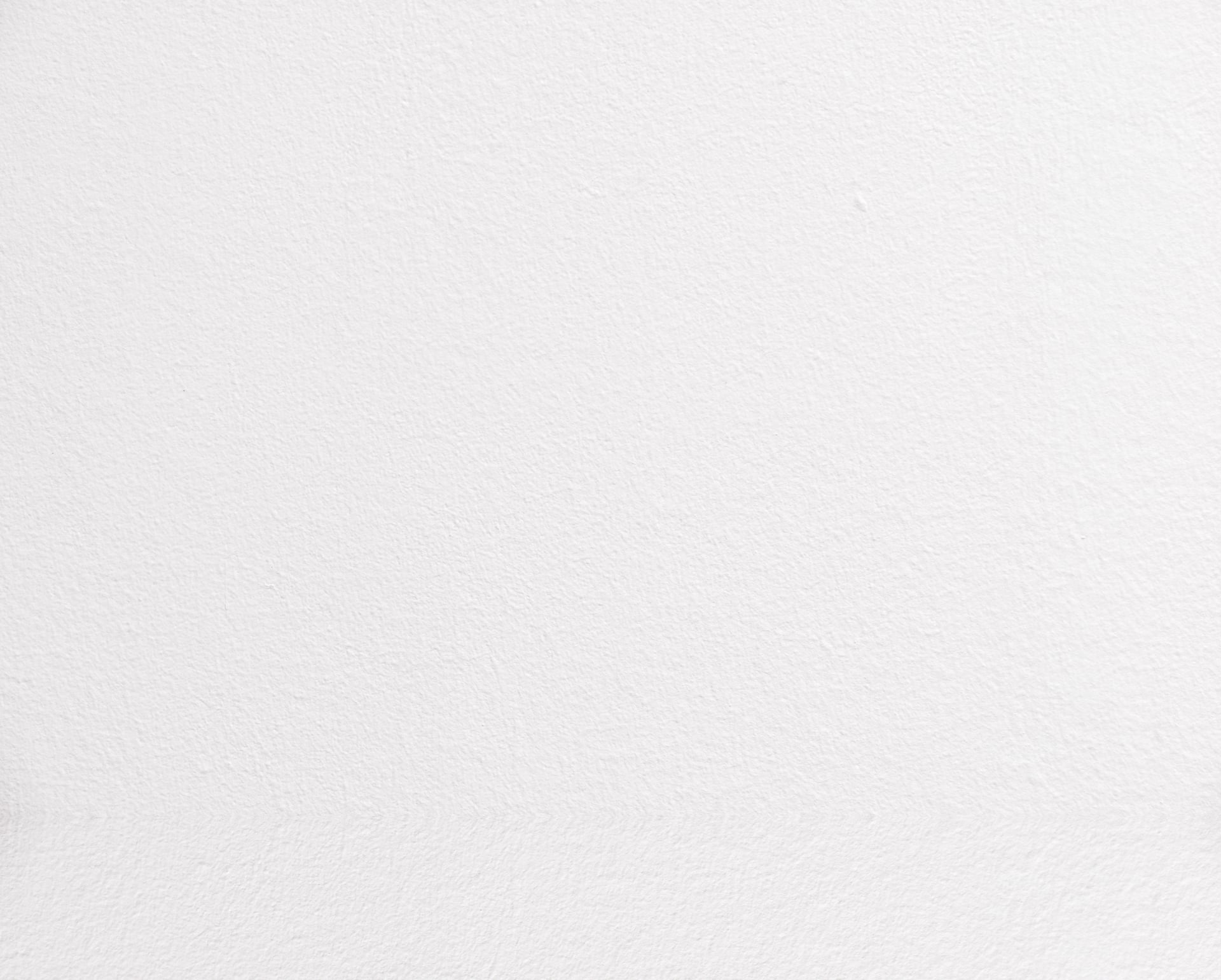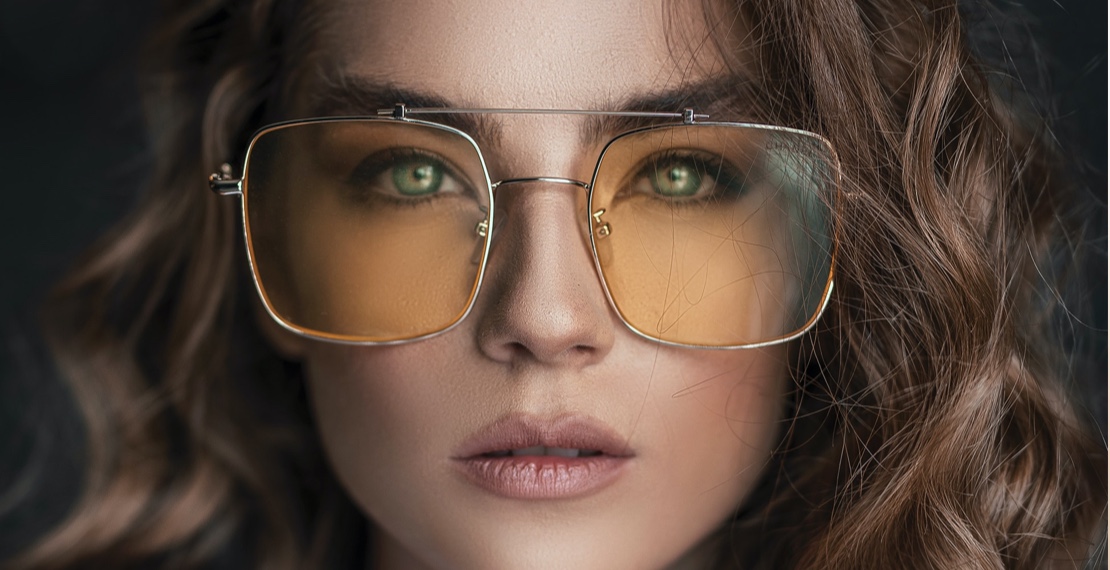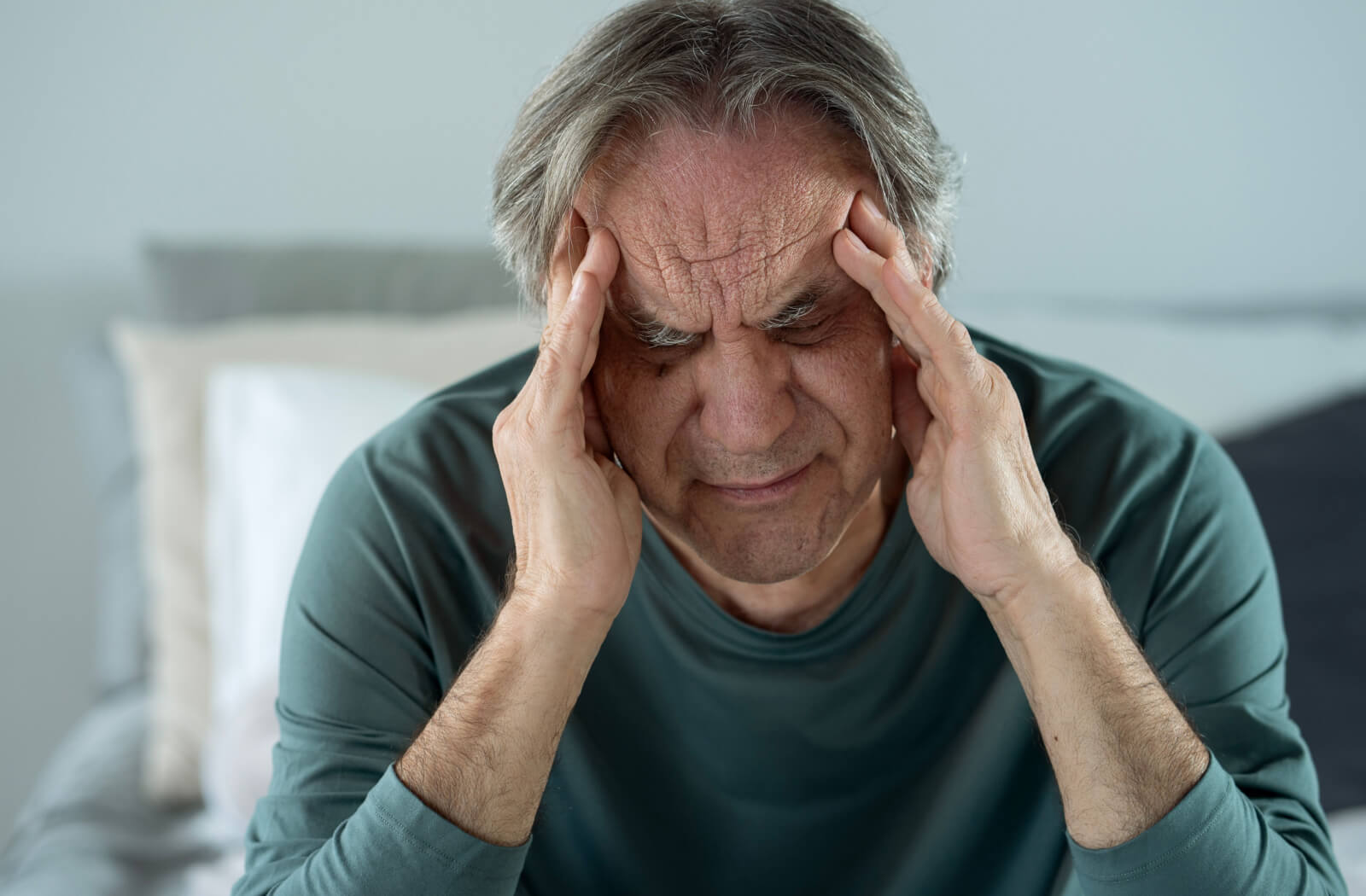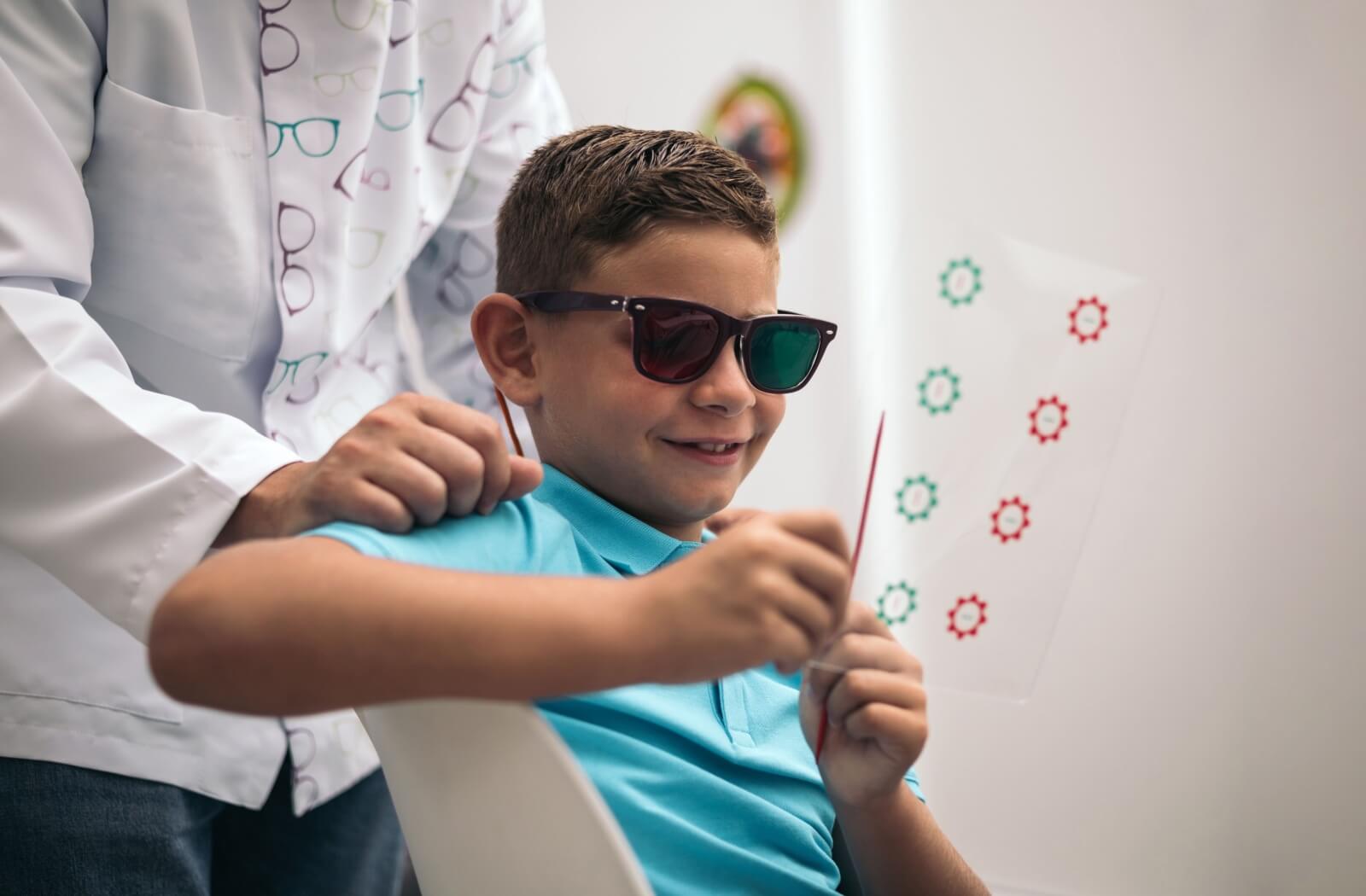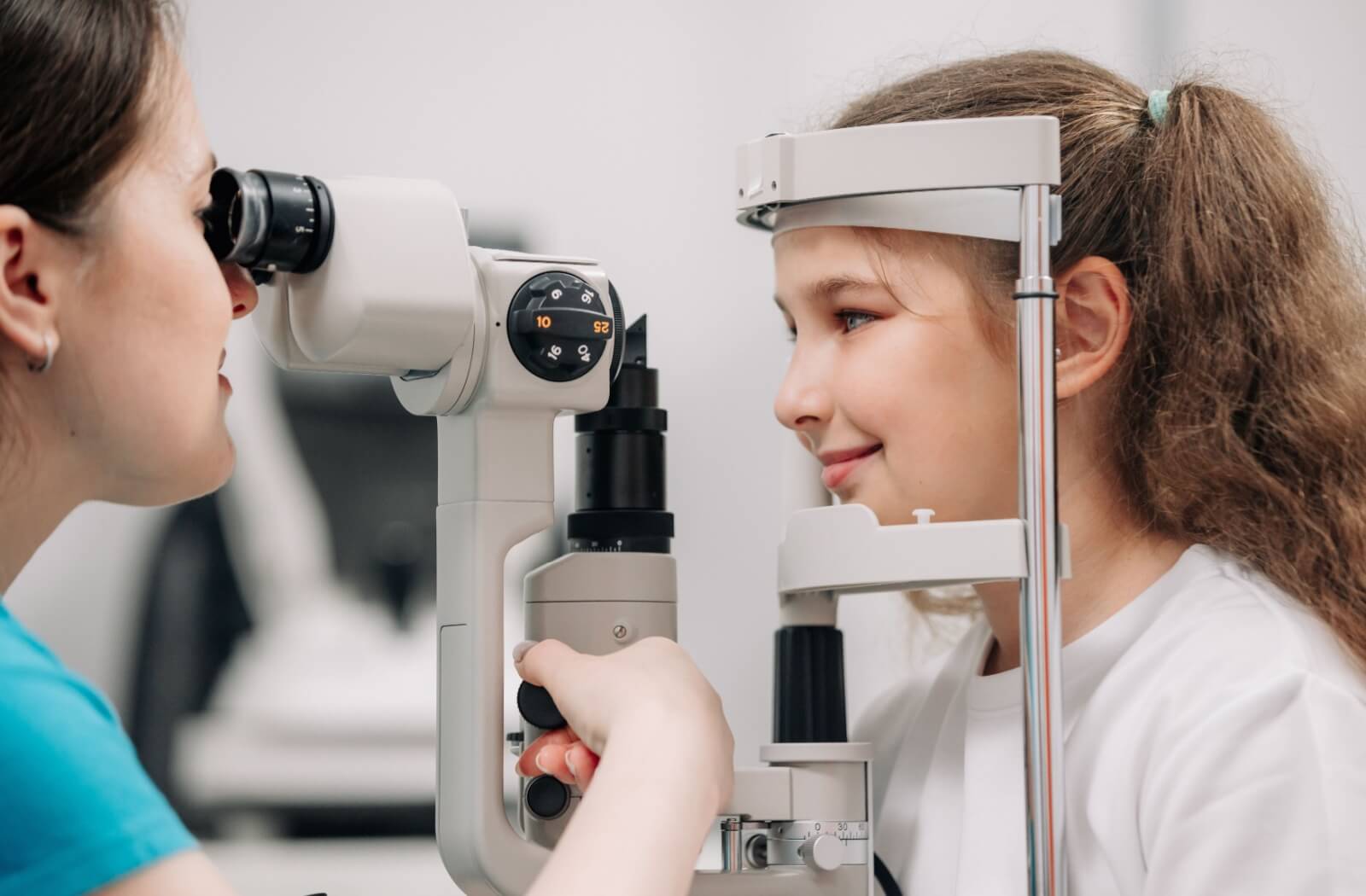The phrase ‘‘the eyes are the window to the soul’ has been circulating for centuries. Most philosophers believe it originated in ancient Roman times. Both Leonardo Da Vinci and William Shakespeare have been credited for using that phrase to convey how the eyes can express emotion. What they didn’t know centuries ago, is that they were right in more than one way!. The eyes and visual system tell a story of your overall health. During your comprehensive eye exam, your eye doctor can detect signs of metabolic disease (diabetes, hypertension), stress and traumatic brain injury just to name a few.
Your eyes are also a wonder to look at and can convey emotions like love, adoration and pain. Eyes are a spectacular display of complex neurology and also one of the first things we notice about others. . More than just a mesmerizing trait, the color of our eyes has unique considerations for our eye health.
The colored part of your eye is called the iris. It is actually composed of tiny, delicate muscles that control pupil function – making your pupil smaller when going into a lighter environment and larger when going into a darker environment. The iris also has the important job of focusing light (accommodation) for clear vision.
People with blue eyes are more sensitive to sunlight because their eyes have lower levels of melanin, a natural pigment that can protect us from the sun’s harmful rays. Although people with darker eyes have more melanin, this doesn’t mean they are immune from harmful sun damage. Regardless of eye color, everyone benefits from solid sun protection.
The Science Behind Eye Color
Eye color, as well as the color of other features like your skin and hair, are determined by a pigment called melanin.
The amount of melanin in the iris determines its color and, therefore, the color of your eyes. Higher levels of melanin result in darker shades like brown eyes, whereas lower levels result in lighter shades like blue and green. The most common eye color is brown at 75% and the most rare is green at 2%.
Melanin’s Role in Eye Health
Beyond aesthetics, melanin serves a strong protective function. It acts as a natural barrier against harmful ultraviolet (UV) radiation, absorbing and deflecting rays to protect the retina and other structures of the eye.
Darker eyes, which are abundant in melanin, provide stronger UV protection. In comparison, lighter eyes like blue or green are more prone to light sensitivity and potential sun damage because they have less melanin to shield them, allowing more light to enter the eye.
The relationship between eye color and UV protection mirrors skin tone and the risk of sunburn. Just as less pigmented skin is more susceptible to burns, eyes with less melanin are more vulnerable to the harmful effects of sunlight.
Sun Damage & Our Eyes
The sun provides many benefits, including regulating circadian rhythms (sleep cycles), mood and increases our own bodies production of Vitamin D. The sun has benefits, but in excess, UV rays can pose serious risks to our eyes (and other areas of our health).
Although people with light-colored eyes are more susceptible to UV damage because of their eyes’ lower levels of melanin, exposure to UV rays can lead to cumulative damage over time even for those with darker eye colors, making sun protection essential for everyone.
Why Does Sun Damage Happen?
UV rays are a form of invisible radiation produced by the sun. UV-A and UV-B rays are the most relevant to eye health.
If your eyes are unprotected, these rays can penetrate the cornea and lens, and can even reach the retina, leading to potential damage.
- UV-A Rays: Besides affecting the eye’s internal structures, UVA light can also cause wrinkles and sunspots around the eyes, and it’s linked to certain skin cancers.
- UV-B Rays: Mostly absorbed by the cornea, but still capable of causing significant damage to the surface layers of the eye and skin around it.
UV exposure can happen even on cloudy days, because up to 80% of UV radiation passes through clouds. Prolonged exposure outdoors without sun protection increases the risk of developing eye health concerns. Just think about that time that you got a sunburn on a cloudy day. Often most sun damage occurs when we least expect it, that’s why I recommend wearing SPF daily and polarized sunglasses so you can always be prepared.
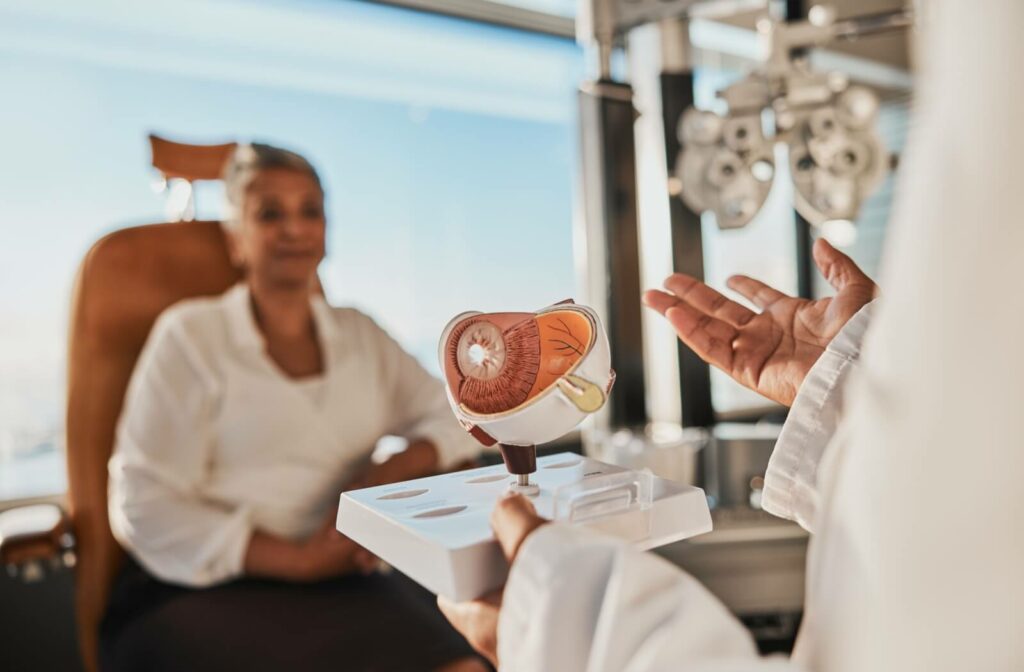
Eye Conditions Linked to Sun Damage
Excessive sun exposure can cause or accelerate several eye conditions, affecting our vision and eye health, such as:
- Photokeratitis or “sunburn of the eye”
- Cataracts
- Macular degeneration
- Pterygium “surfers eye”
- Skin cancer around the eye lids
Blue eyes, for instance, allow more light to reach the retina, increasing the potential risks of these UV-related conditions.
This isn’t to say that, just because you have blue eyes, you’re at a constant risk of developing these eye conditions. Rather, you may need to take extra precautions when spending time outdoors or in the sun, similar to how some people need more sun protection for their skin.
Protecting Your Eyes from Sun Damage
Just as sunscreen protects your skin, your eyes require their own set of defenses against harmful UV rays. Fortunately, there are many effective ways we can accomplish this.
Stylish Sunglasses
A tried and true classic for decades, sunglasses are more than a fun accessory. They act as a physical barrier, shielding your eyes from harmful UV rays.
However, not all sunglasses are created equal. When choosing a pair of sunglasses, it’s important to opt for one that offers 100% UV protection. Look for labels that specifically mention blocking both UVA and UVB rays. Polarization is my personal favorite, as it reduces glare, enhances clarity and colors. You can even catch me wearing my polarized sunglasses on a cloudy day!
Consider wraparound frames or larger lens styles. They offer additional protection by minimizing the amount of sunlight that can bypass the edges of the lenses. Sunglasses also reduce eye strain and can make outdoor activities more enjoyable.
Keep in mind that darker lenses don’t necessarily mean better protection. Without proper UV filtration, dark lenses can cause your pupils to dilate, allowing more damaging rays to enter your eyes. The quality of UV filtration is what truly matters.
Tips for Sun Protection
Sunglasses go a long way in protecting your eyes from sun damage, but there are other strategies we can use to complement a fresh set of frames.
- Wear a wide-brimmed hat: This adds an extra layer of protection. Hats can block direct sunlight from reaching your eyes, reducing glare and shielding your face from harmful UV rays.
- Use UV-blocking contact lenses: For contact lens wearers, consider lenses with built-in UV protection. While they don’t replace the need for sunglasses, these contacts can provide an additional safeguard against harmful sunlight.
- Avoid peak sun hours: The sun’s rays are strongest between 10 a.m. and 4 p.m. Whenever possible, limit your time outdoors during these hours, or make sure you have solid sun protection if you must be outside.
- Stay up-to-date with eye exams: Regular exams with your eye doctor can help detect signs of sun damage early, allowing for timely intervention and management.
Safeguard Your Sight
Your eyes are truly the windows to the soul, and you only get 2 in this lifetime! The small actions you take now can make a significant difference in protecting them from preventable damage over time.
When it comes to your eye health, preparation and prevention are key. Connect with our Bella Vision team to schedule a routine eye exam or browse our selection of sunglasses.


